
Fast, affordable Internet access for all.

Fiber to the Home
Bountiful, Utah officials and community broadband advocates are breathing a sigh of relief as the Utah Taxpayers Association’s “Gather Utah” petition to stop the city from building an open-access network in partnership with UTOPIA Fiber fell short.

This past Friday was the deadline for “Gather Utah” to collect enough signatures for a petition that would have forced a citywide vote on the $48 million in revenue bonds authorized in May by city councilors to fund network construction.
In a press statement, City Manager Gary Hill said: “hired signature gatherers ultimately failed to collect enough signatures from registered voters to advance the opposition campaign.”
Bountiful Mayor Kendalyn Harris added:
“Bountiful is a unique city. Our residents started this process. They organized a ‘Fiber for Bountiful’ campaign that led to a thorough consideration of many options. We now look forward to offering a vital service to residents and businesses in an increasingly digital world.”
Now, after three years of study and more than two dozen public meetings, Bountiful Fiber will begin construction next month. As we previously reported, the city-owned fiber optic network will provide gigabit speeds to residents and businesses who subscribe for service.
Earlier this month American Association for Public Broadband (AAPB) President Gigi Sohn wrote an op-ed in the Salt Lake Tribune about how the “Gather Utah” campaign (backed by the cable industry) tried to derail the city’s project. After news of the petition failure, Sohn said:
Fort Piece, Florida officials say the city continues to make steady progress with its plan to expand access to affordable fiber to all 45,000 Fort Pierce residents with the help of the city-owned utility. The network, inspired by similar utility-backed efforts in cities like Chattanooga, promises to deliver multi-gigabit speeds at prices notably lower than regional monopolies.
Since 1972, the Fort Pierce Utilities Authority (FPUA) has provided gas, electric, water, and natural gas services to city residents. Since the early 2000s, FPUA has deployed 110 miles of optical fiber via its FPUAnet Communications division. In 2018, the city, frustrated by limited broadband competition, decided to expand network access to the public.
“Our network is moving along well,” Jason Mittler, FPUAnet manager told ILSR. “We have passed about 1000 parcels and will pass another 1000 next year.”
The full deployment is expected to take somewhere between five to ten years to finish, and is funded by bonds held by FPUAnet. The network is utilizing GPON fiber technology capable of 2.5 Gigabits per second (Gbps) downstream and 1.25 Gbps upstream in some areas, and XGS-PON-based fiber capable of symmetrical 10 Gbps speeds in others.
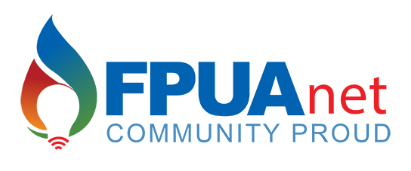
Mittler notes that the finished product should result in both last-mile speeds and pricing that regional telecom monopolies, predominantly AT&T and Comcast, are both unable and unwilling to offer. Especially on the upstream side of the equation.
Mittler says the plan remains to provide all locals with access to symmetrical 100 Mbps for $49 a month; symmetrical 200 Mbps for $69 a month; symmetrical 200 Mbps service for $69 a month, symmetrical 500 Mbps for $79 per month; and symmetrical gigabit for $99 a month.
The city of Dublin, Ohio has struck a public private partnership with altafiber (formerly known as Cincinnati Bell) to build a new citywide fiber network city leaders hope will finally deliver the kind of affordable, next-generation broadband access Dublin’s 50,000 residents have long been clamoring for.
In 2022 the city issued a request for proposal (RFP) looking for a partner on a citywide network build. At a June 26 meeting, the Dublin city council voted unanimously to select altafiber from a roster of seven potential applicants.
According to the arrangement, construction of the city network is expected to begin in Spring of 2024, with every premise in Dublin passed by a 10 gigabit per second (Gbps) capable network within three years. A select number of undetermined customers are expected to be brought online sometime in the latter part of next year, officials tell ILSR.
A city press release notes that altafiber will invest $35 million in the fiber network, as well as potentially providing the infrastructure necessary to help the city support either public Wi-Fi initiatives or a City Innovation Center. The city says it will pay about $6 million to bury the necessary fiber infrastructure citywide.
Panhandle Telephone Cooperative Inc. (PTCI) has announced the broadband provider will be dramatically expanding access to its fiber broadband services in New Mexico thanks to a new $43.4 million grant made possible by federal infrastructure legislation.
The Cooperative currently predominately offers fiber broadband, phone, and cellular wireless phone service to subscribers in Oklahoma and Texas. The $43 million cash infusion will allow the cooperative to expand access outside of its existing footprint into rural Union County, in northeast New Mexico.
As per grant rules, the network will deliver speeds of 100 Megabit per second (Mbps) downstream and 20 Mbps upstream, but the cooperative does not yet have a construction timeline or information on planned tiers and pricing.
PTCI’s existing deployments in Texas provide locals with uncapped fiber access at symmetrical speeds of 100 Mbps, 250 Mbps, and 1 Gbps for $60, $86, and $116 per month, respectively. The company stopped offering TV services in 2020, but launched its own cellular network in its existing territories starting in 2021.
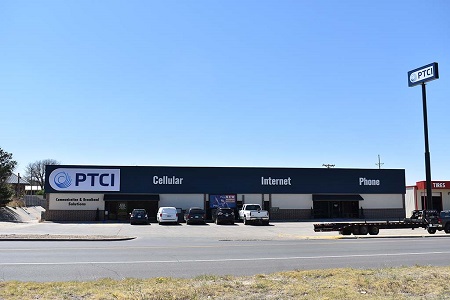
The project’s $43 million grant for expansion into New Mexico was made possible courtesy of a recently announced fourth funding round for the U.S Department of Agriculture’s ReConnect Program. Last month the program announced another $714 million in grants and loans aimed at shoring up broadband access to long unserved or underserved rural Americans.
Ponca City, Oklahoma officials say they’ve completed construction of a citywide fiber broadband network both ahead of schedule and under budget.
The finished network is now providing affordable, uncapped, multi-gigabit fiber access to every local resident in the community or 24,100 residents of Northern Oklahoma city.
In 1996, Ponca City began developing a 140 mile central fiber network to help connect schools, city offices, and other key anchor institutions. The city’s infrastructure was expanded in 2005 to provide access to local businesses, and again in 2007 when the city began providing local access to a citywide Wi-Fi system at no cost to local residents.
Frustrated with substandard service from regional telecom monopolies, in 2014 city officials began seriously talking about building a citywide fiber network. By 2015, officials had begun gauging local interest and found that 85 percent of residents were frustrated with existing service, and overwhelmingly supported the city’s plan to build something better.

That same year officials began network planning and studying other projects in earnest.
“Collectively we studied more than 2 dozen successful projects and 13 failed ones to learn from those experiences,” Dave Williams, Director of Technology Services for Ponca City said at the time. “We visited other cities that have implemented broadband solutions, read countless research articles detailing the challenges and rewards of such projects, and systematically took every aspect of this project apart and looked at it to develop a plan addressing all the potential problem areas the best we possibly could.”
‘Business is Booming’
Eight years later and those efforts are now paying off for Ponca City residents.
Officials in the South Texas town of Harlingen say they’ve put their plan to deploy a municipal broadband network on hold after projected costs ballooned well beyond original estimates.
Originally, Harlingen officials had hoped to construct a $4 million fiber network to shore up broadband access to the city’s unserved and under-served populace, using a portion of the city’s $22 million share of the American Rescue Plan Act (ARPA).
But a $100,000 study conducted by Houston-based consultants Cobb Fendley and Associates suggested a more realistic price tag would be closer to $10 million, forcing city officials to reconsider their plan.
"We were hoping to get it rolling but we ran into a few hurdles along the way," City Commissioner Ford Kinsley recently told GovTech. "We're looking for some sources other than what we originally thought."
A 2019 census survey found that nearly 35 percent of Harlingen’s households (7,887 of 22,901) lacked any broadband access whatsoever, positioning the city as second worst in the state behind Pharr, Texas, which recently built a municipal fiber network to bring affordable connectivity to its city residents. Harlingen school district officials also say they found that 900 students' homes lacked Internet access as of 2020, hampering city education standards.
The majority of the rest of the city’s residents are served by one or two providers, resulting in spotty access, high prices, and sluggish speeds. As with so many U.S. markets, the Covid home education and telecommuting boom drove home the need for the kind of affordable, uniform broadband access regional monopolies long failed to deliver.
In the Salt Lake City suburb some call “the garden spot of Utah,” Bountiful, Utah officials have settled on a plan to bring Bountiful Fiber and affordable connectivity to its residents and businesses.
By unanimous vote of the city council, the issuance of $48 million in bonds was authorized on May 26 to fund construction of what will be a city-owned open access fiber network.
The city will own the network and lease it out to multiple private Internet service providers (ISPs) – a model that city manager Gary Hill described as a way to create “a competitive marketplace for Internet service providers."
In a letter to city councilors before the bond issuance was authorized, Hill wrote: "Resident requests and sentiment ... demonstrate a need for city involvement to provide adequate, competitive, reliable broadband services.”
After issuing an RFP in November of last year, the city contracted with the nation’s largest open access network – UTOPIA Fiber – to build, operate, and maintain the network. It is expected that construction will take about 2 to 3 years to complete, though some subscribers will likely be lit up for service within 18 months of the start of construction, scheduled to begin this month.
Dark Money Looks to Torpedo Project
A dark money campaign spearheaded by the Utah Taxpayers Association (UTA), however, is threatening to derail the project. The group, whose annual conference is sponsored by Comcast and CenturyLink/Lumen, is backing a “Gather Utah” initiative to obtain signatures for a petition that would stop the city from building the network.
Colorado Springs, Colorado and its city-owned utility have begun construction on the second phase of a promising open access fiber optic network that should bring affordable fiber broadband to the city of half a million residents.
Construction of the network by Springs Utilities began in the first region in September 2022, shortly after the city-owned utility struck a 25-year lease agreement with Ting to be the network anchor tenant. Once completed, the network aims to deliver multi-gigabit service to roughly 200,000 homes, businesses, and city anchor institutions.
Local residents can pre-order service via the Ting website, but the company has yet to announce pricing or service tiers for its Colorado Springs deployment.
Brian Wortinger, Manager of fiber optics and telecommunications for Springs Utilities, told ILSR that the first phase of deployment passed 21,000 homes in the first fiber hut reason.
“Take rate is not a consideration for us, as we will lease 100 percent of the addresses to our anchor tenant, Ting Internet,” Wortinger said when asked about subscriber interest. “Their degree of success in obtaining customers has no impact on the revenues that we will generate through our dark fiber lease with them or any other tenant.”
The first phase of the network construction began in September of 2022, resulting in 225 new fiber route miles between I-25 and North Powers Boulevard. The second phase of the deployment began in June, and is focusing on the Rockrimmon neighborhood in Northwest Colorado Springs across I-25.
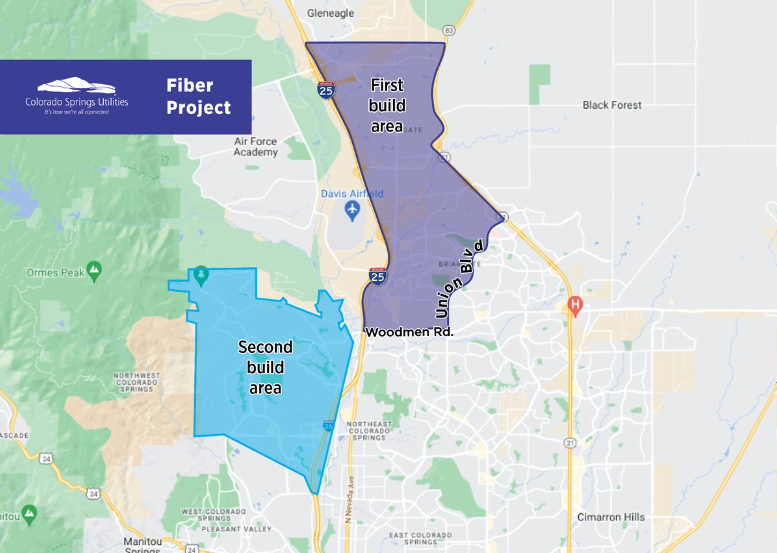
Overall, project managers say they are only slightly behind their original projected schedule.
It was a big week for ECFiber as Vermont’s first – and oldest – Communication Union District (CUD) celebrated lighting up the last hub of its 1,500 mile-network in White River Junction.
To mark the occasion of connecting the “golden patch cord” that will extend high-speed Internet service to eight more communities in the Upper Valley region, White River Junction’s VFW Hall was packed this past Tuesday with CUD officials, local and state leaders, enthusiastic residents, and U.S. Sen. Peter Welch. They were there to celebrate what ECFiber officials liken to “the Golden Spike moment tying the first transcontinental railroad together.”
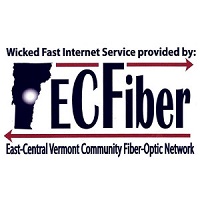
After a 30-piece band played marching tunes, ECFiber Chairman F.X. Flinn marched to the podium to describe the meaning of the moment.
"It’s come to fruition today with a lighting of the White River Junction hub," he said. "This is the last piece of the puzzle for the network we originally envisioned that would bring world-class broadband to every home and business in the 23 member towns that originally voted town meeting day 2008 to create ECFiber."
Sen. Welch, an ECFiber subscriber who also spoke at the event, credited the state’s community broadband approach as the linchpin to solving the state’s digital divide:
“If we in rural Vermont were going to depend on the big telecommunication companies to wire our homes and get us Internet, we’d be waiting until our grandchildren had grandchildren. It wasn’t going to happen.”
Eight More Towns Join CUD
Suwannee Valley Electric Cooperative (SVEC) has begun construction on an ambitious new fiber deployment that will soon bring affordable, multi-gigabit fiber access to all of the cooperative’s existing electrical customers in rural Northern Florida.
Cooperative officials tell ILSR its three-phase build out is well underway, with a beta anticipated this summer and the first commercial customers connected by August. SVEC Communications Director Jon Little says the cooperative’s goal remains to deliver affordable fiber to all 20,000 of the cooperative's current electric customers by the end of 2026.
“We’ve broken our territory into three phases based partly on population or possible customers,” Little said.
The cooperative’s recently created subsidiary, Rapid Fiber Internet, will interface directly with subscribers, while Conexon manages deployment of more than 4,100 miles of fiber. Electrical users won’t see price hikes; the projected $93 million deployment cost will be funded by a combination of grants and loans paid back exclusively through user subscriptions.
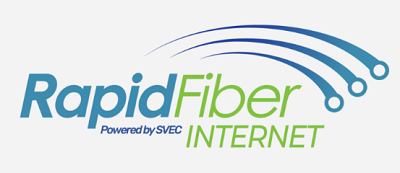
Little told ISLR that make ready (preparing utility poles for fiber attachments) prep and engineering for phase one are complete, and make ready construction for phase one is roughly 40 percent complete. He added that primary fiber construction for phase one is roughly twenty percent complete.
“We’re hoping that we will have a group of beta customers starting next month,” Little said. “We want to go about a month to get their feedback, and so we’re still hoping sometime in August to offer hookups to our members on that first feeder.”